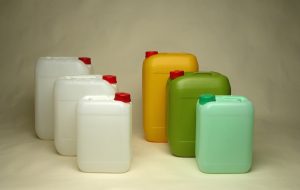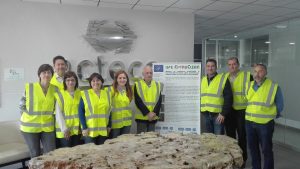A new decontamination technology will allow recycling packages having contained hazardous substances
 After two years of researches, the European project LIFE EXTRUCLEAN has resulted in an innovative process in pilot plant to decontaminate plastic wastes having contained hazardous substances. Effectiveness of the new technology exceeds 70 % the conventional processes, while the challenge of the coming six months is scaling the results at industrial level and validating the characteristics of the new packages manufactured with the resulting material.
After two years of researches, the European project LIFE EXTRUCLEAN has resulted in an innovative process in pilot plant to decontaminate plastic wastes having contained hazardous substances. Effectiveness of the new technology exceeds 70 % the conventional processes, while the challenge of the coming six months is scaling the results at industrial level and validating the characteristics of the new packages manufactured with the resulting material.
The project has a duration of 30 months and is funded through the EU’s LIFE programme and coordinated by AIMPLAS, the Plastics Technology Centre. Other entities, such as the technology centre AIDIMME, the association of exporters ARVET, as well as companies such as ACTECO and ENPLAST take part, all leaders in the plastics recycling and packaging manufacturing, respectively.
In order to eliminate toxicity in plastic packages having contained toxic substances and hazardous mixtures, it is currently used the triple washing and drying method. It is a treatment where large amounts of water, washing liquids and energy are used, as well as the generation of waste waters, which must have a specific treatment. After this decontamination process, plastics are usually processed by means of extrusion, since this treatment affects their performances.
The project LIFE EXTRUCLEAN has developed a decontamination process by using sc-CO2 (supercritical carbon dioxide) in the extrusion process. The company ACTECO, together with AIMPLAS, is implementing the new technology with the aim of simplifying the current washing and drying processes previous to extrusion, with the consequent energy and resource saving. The company ENPLAST will be responsible of obtaining packages with the new recycled material and, together with AIDIMME, they will carry out their validation for the final application. On the other hand, ARVET has coordinated the dissemination activities foreseen during the project’s duration.
 Sustainable and efficient technology
Sustainable and efficient technology
Besides being a clean technology, since it reduces the use of chemical substances, water and energy, as well as the generation of waste waters, this new system will allow to improve the quality of the recycled material. In this way, the scope will be widen to others with higher added value, such as the manufacturing of new packages for hazardous substances and mixtures.
Especially during the first half of the project, the process was optimized by using contaminated polyethylene jerry cans in a controlled environment with simulants and liquid models. The results showed percentages of reduction of simulants up to 80 % in the case of packages for industrial or phytosanitary products, what means a 70 % more than with traditional methods.


































